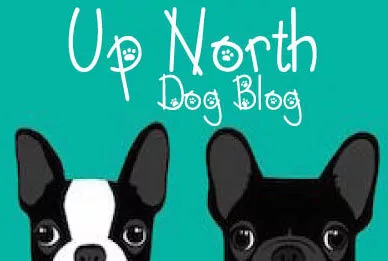 It was a little late, but we finally had our first snow. It’s funny at my house… I have one dog that loves the snow. And one that gets cold just looking out the window. So, it’s time to find all the coats and get him acclimated to cold weather again. After all, April is a long way off.
It was a little late, but we finally had our first snow. It’s funny at my house… I have one dog that loves the snow. And one that gets cold just looking out the window. So, it’s time to find all the coats and get him acclimated to cold weather again. After all, April is a long way off.
This week, let’s touch on a few tips to help keep your dog warm and happy as we head into our Up North winter.
Limit your dog’s time outside.
Every dog is different, so know your dog. Dogs that were bred for outdoor activities like the Newfoundland or Huskie can spend more time outdoors than a small, short haired dog like a Boston Terrier or Chihuahua. So learn your dog’s tolerance. And any time it’s really cold, below zero for sure, quick potty breaks are really all any dog can tolerate.
Find ways to keep your dog entertained indoors.
There are so many interactive games, lick pads, and chew toys that help dogs get indoor stimulation. And don’t forget, they love it when you play too. One of my favorite games I used to play with my dogs and a very young nephew was hide and seek. I would hold on to my dog and he would run through the house and find a place to hide. Then the dog would take off and find him. They both loved that game and it was great exercise.
Bundle them up.
My Bailey puts on his coat in November and rarely takes it off until it gets warm again. He has a number of lighter fleece shirts for indoor and heavier, waterproof jackets for outdoors. Pippa is a little more cold tolerant so she only wears a coat when we go for longer walks. Just remember, if you need a heavy coat, so do they.
Pay attention to their age.
Puppies and older dogs have a harder time regulating their body temperature than young adult dogs. So make sure your old dog and your puppy get extra care.
Cold weather sleeping.
Just like people, dogs’ body temperature goes down when they sleep. Mine both sleep under the covers and love it when I put a baby blanket in their day bed. If you have an older dog with joint issues, consider investing in a heated bed. Many have auto shut offs so they do not get too warm.
Winter feet
If you have a dog with longer hair between its toes, keep it trimmed closely in the winter. They can develop painful ice balls between their toes when walking. And if you walk in town, always wipe your dog’s feet after the walk. Salt can burn their tender paws. A good paw moisture balm is also important to keep their feet from cracking.
Beware of antifreeze.
As little as a teaspoon of antifreeze can cause kidney failure. Be alert to the signs that your dog has swallowed some of it, which include drooling, vomiting, seizures, excessive thirst, panting, lethargy, and a drunken appearance. If you think your dog has ingested antifreeze, it’s important to get to a vet as soon as possible. Even if you keep your antifreeze safely tucked away, there is still a danger from residue in the streets. Most antifreeze is green ethylene glycol, but it comes in several different colors. So watch where your dog is sniffing.
Leaving your dog outside.
Dogs are social animals and need to be with their people. There should be no such thing as an “outdoor” dog. If you leave your dog outside during the day, always make sure they have a dry, protected house with straw and waterproof bedding. Check the bedding daily to make sure it is not wet. Wet bedding will draw body heat away from your dog and can cause hypothermia.
And if the temperature is below 20 degrees, just bring them inside. No dog should ever be outside for long periods of time when it is colder than 20 degrees. And never, ever leave them outside overnight. It’s just not humane.
With a little preparation, every dog can have a great Up North winter!!!









